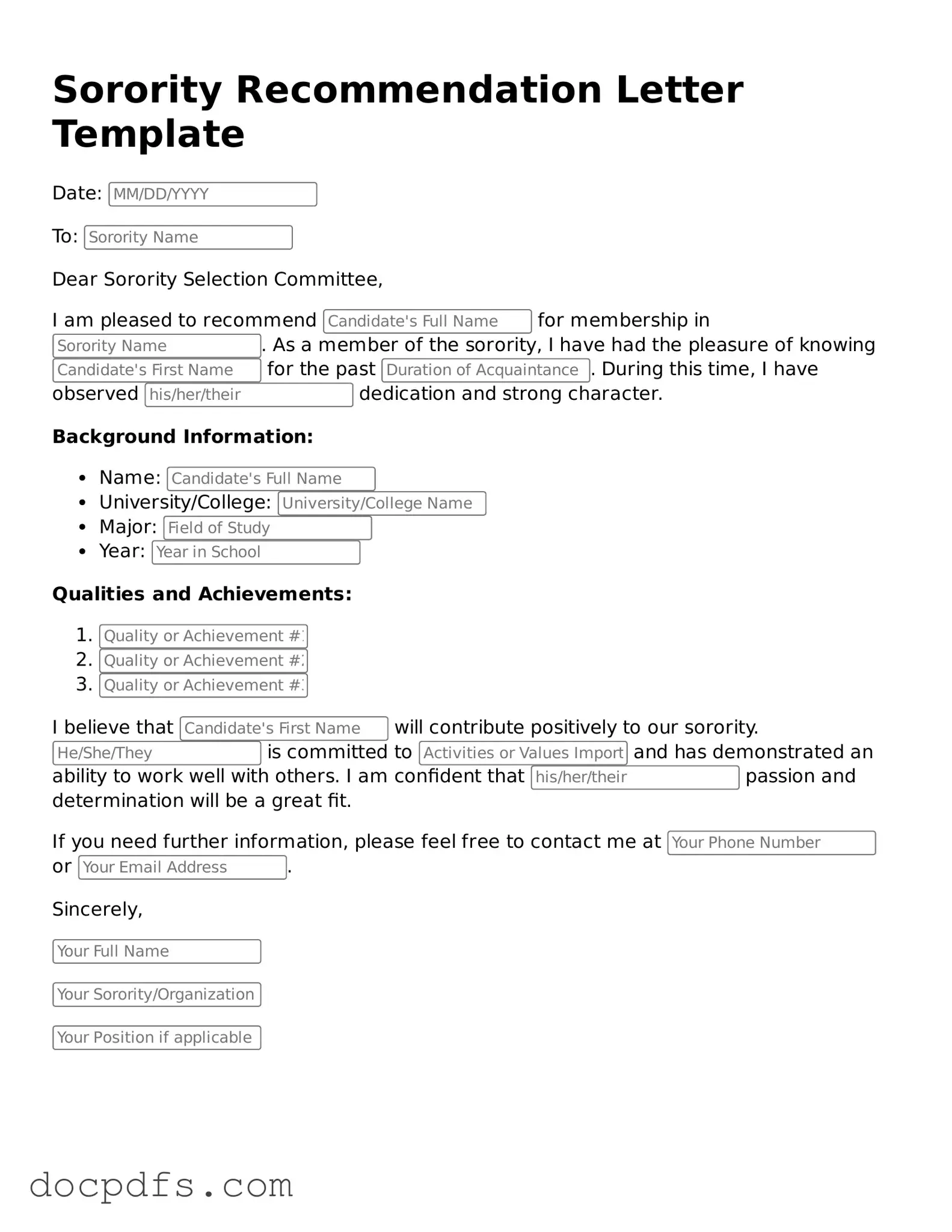Legal Sorority Recommendation Letter Document
The Sorority Recommendation Letter form is a document used by sororities to gather insights about potential new members from individuals who know them well. This form plays a crucial role in the recruitment process, helping sororities assess candidates' character and suitability. Understanding how to effectively complete this form can enhance a candidate's chances of receiving an invitation to join a sorority.
Open Sorority Recommendation Letter Editor Now
